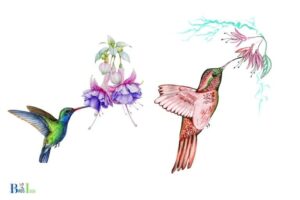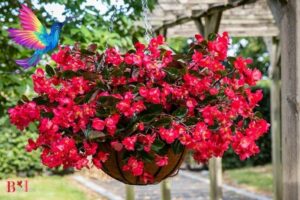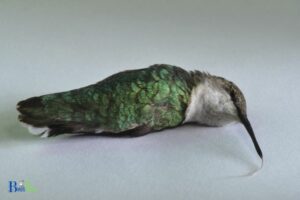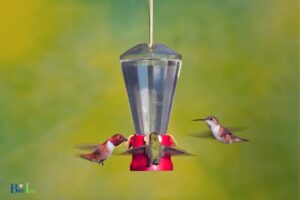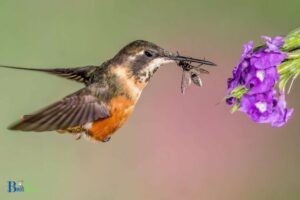What Are Hummingbirds Good For: 6 Benefits!
Hummingbirds are essential to our environment, providing important pollination services many plants would otherwise not have access to.
Hummingbirds are known for their small size and rapid wing-beating.
They feed on the nectar of flowering plants, and in the process of feeding, they inadvertently carry pollen from flower to flower, hence aiding in pollination.
This cross-pollination is essential for the survival of many plants.
Additionally, they consume small insects and spiders, helping to manage those populations in their habitats.
Hummingbirds have a unique role in the natural world:
Hummingbirds’ ecological impact is often misunderstood, yet they are an integral part of the natural world.
They provide a unique service in their pollination role, and their role as an indicator species helps us monitor the health of the environment.
Hummingbirds play a valuable part in the health of our ecosystems, ensuring our planet remains balanced and beautiful.
6 Benefits of Hummingbirds with Description
| Benefits of Hummingbirds | Description |
| Pollination | Hummingbirds help to pollinate flowers while they collect nectar, aiding in plant reproduction. |
| Insect Control | They consume a large number of insects daily for protein, helping to control these populations. |
| Biodiversity Indicator | They are important indicators of biodiversity and ecosystem health due to their sensitivity to environmental changes. |
| Scientific Research | They are unique subjects for research in evolutionary biology and animal physiology due to their special traits such as flight speed and metabolism. |
| Ecotourism | Their beauty and unique behaviors attract bird watchers and tourists, contributing to local economies. |
| Cultural Significance | They have important symbolic roles in different cultures, from being seen as messengers to symbols of resilience and joy. |
Key Takeaway
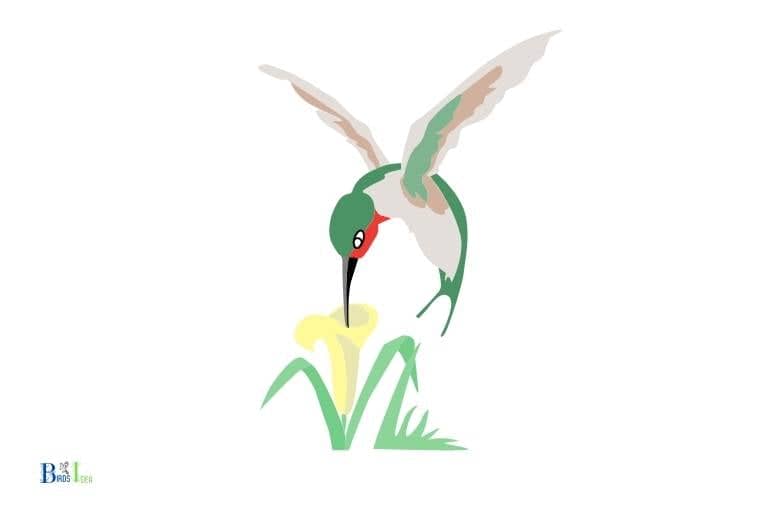
Five Facts About: Hummingbirds Good
What Do Hummingbirds Eat?
Hummingbirds feed primarily on nectar and insects, which they capture in mid-air or pick from flowers and other plants. They typically eat 1.5 to 3 times their body weight in food each day.

The main diet of hummingbirds consists of flower nectar, small insects and spiders, fruit juices, tree sap, and pollen.
Hummingbirds also feed from hummingbird feeders, that generally contain a solution of four parts water to one part sugar. Additional nutrition can also come from protein supplements in some feeders.
What Are Hummingbirds Used For?
Hummingbirds are used for a variety of purposes, such as pollination, to disperse seeds, and to provide enjoyment to people watching them.
They are also an ecologically important species for the many insects, nectar sources, and other food sources they consume during their lifetime.

They have been used in research to study animal behavior and adaptation, as well as to show the effects of climate change on species.
Additionally, hummingbirds are the national bird of many countries, including Colombia, Costa Rica, Ecuador, and Venezuela, and have often been used as symbols of national pride.
Benefits of hummingbirds:
How Do Hummingbirds Survive?
Hummingbirds are capable of surviving in a wide range of habitats, from deserts to rainforests. They use their rapid flight and strong hovering ability to reach food sources, escape predators, and find shelter.
In order to survive, hummingbirds need access to food, protection from the elements, and protection from predators.
To find food, hummingbirds feed mainly on nectar and insects and hunt actively in the environment using their long, slender beak.

To find shelter, they will nest in bushes and trees. To protect themselves, they make use of camouflage, rapid flight, and use their sharp beak and claws as weapons.
Their high metabolism also helps them survive their fast-paced lifestyle by allowing them to quickly convert food into energy.
What Are The Benefits of Having Hummingbirds?
Having hummingbirds can be incredibly beneficial, both ecologically and aesthetically.
Hummingbirds help to maintain a healthy balance in the environment, by actively pollinating flowers and plants which help to propagate ecosystems.

They also play a role in controlling pest populations, as they feed on insects, spiders and insects eggs.
Physically, hummingbirds are an enchanting and captivating sight, possessing jewel-like feathers in glorious color and shimmering iridescent hues.
Here are some of the main benefits of having hummingbirds:
Do Hummingbirds Have Any Predators?
Yes, hummingbirds have a variety of predators. These include other birds such as jays, hawks, crows, and even squirrels.

They may also be preyed upon by snakes and cats. Other potential predators are reptiles, rodents, raccoons, and frogs.
In addition, window strikes, fire ants, and window decals can be fatal to hummingbirds.
Factors that affect the safety of hummingbirds include:
What Are The Different Types of Hummingbirds?
Hummingbirds are a family composed of more than 350 species.The two most widespread groups are the hermits, which live in the Atlantic forests of South America, and the brilliants, which are found in Mexico, Central American and North America.
Some North American species include the ruby-throated hummingbird, the calliope hummingbird, and the black-chinned hummingbird.

In South America, species include the violet-capped woodnymph, the white-necked Jacobin, the ruby-topaz hummingbird, and the rufous-breasted hermit.
Other types of hummingbirds found in the Americas include the crowned woodnymph, the rose-throated becard, and the sapphire-spangled emerald.
There are also species of hummingbirds found in regions of Asia, Africa and South Pacific.
How Are Hummingbirds Adapted To Their Environment?
Hummingbirds have evolved several adaptations to help them thrive in their environment. These adaptations include a small, light-weight body, specialized wings, an ovipositor and a long, slender bill.

The small size of their bodies allows hummingbirds to fly quickly and change direction easily, while their wings allow them to hover in midair. They also have a long, slender bill, which helps them access nectar and pollen from flowers.
An ovipositor located at the tip of their bills lets them eat without being stung by insects. Finally, their feathers are specially divided to help maintain steady and efficient flight.
What is The Lifespan of a Hummingbird?
The lifespan of a hummingbird can range from 3-12 years depending on the species.
Many species tend to live longer if they are nesting in a safe and protected environment with access to plenty of food, water and nesting material.

The oldest known hummingbird in nature was over 13 years old in 2020. In captivity, some species have been known to live up to 15 or 20 years with proper care.
Factors that affect the lifespan of a hummingbird include:
FAQ of What Are Hummingbirds Good For
What do hummingbirds eat?
Where do hummingbirds live?
Are hummingbirds migratory?
How fast do hummingbirds fly?
What are hummingbirds good for?
Conclusion
Hummingbirds are invaluable to our environment, providing important pollination services, excellent indicator species, and a unique role in the food chain.
They are an integral part of the natural world and must be protected in order to ensure our planet remains balanced and beautiful.

